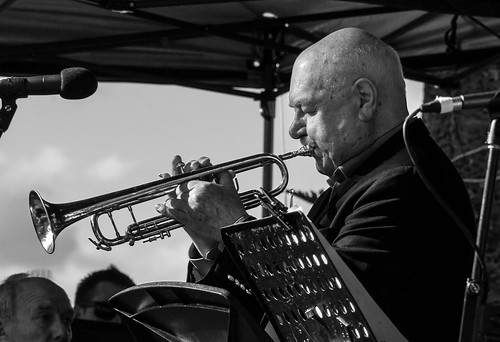Changing the sound on the trumpet
![]() Laurie Wilson via Compfight
Laurie Wilson via Compfight![]() Anthony via Compfight
Anthony via Compfight
The trumpet has all different ways of changing the sounds. There is four ways of changing the instrument sound. 1. Use another type. 2. Use a different mouthpiece with a bigger or smaller shape. 3. Push the valves. 4. Blow the air slower or faster through the mouthpiece. But why does the sound changes? Well, I’m here to tell you.
The most common trumpet is the B Flat trumpet. There are other ones with other sounds like the A, C, D, E Flat, E, low F, and G trumpets. There are more like the piccolo trumpet that’s the only one with 4 valves, the slide trumpet, the bass trumpet, the pocket trumpet, the baroque trumpet, the rotary trumpet, the herald trumpet, the Ptrumpet which is made with plastic. Some of the instruments close to the trumpet are a cornet, flugelhorn, and the bugle. There are still more but this is most of them.
The reason the sound changes is because the length and the size of the pipes and the instrument are different or the material is different like the Ptrumpet.
You can change notes when you push the valves. There are seven combinations of the three valves. You can change the sound of the trumpet also without changing the valves by blowing the air faster or slower through the mouthpiece while buzzing. You still need to keep the fingering the same though. But why does the sound change? Well I’m going to tell you. They have holes in the valves that change the path of the air and the vibration to the bell. That makes the air reach to the bell quicker or slower that changes the sound.
You might think the mouthpiece won’t affect the sound at all. But you’re wrong. The mouthpiece will effect the sound too. In fact, it has a large effect on the instrument sound. There are 8 parts on the mouthpiece. Each one makes a difference. smaller the inner rim diameter is, the higher the range you could play. The mouthpiece makes a difference to the instrument because of the shape. Like if the cup was bigger/deeper, it will make a deeper sound because more space to vibrate. If you need to play a long time, it will be quite difficult because you need to fill the big space with air constantly.

Mouthpiece parts
- Inner rim diameter
- Rim width
- Rim contour
- Rim Edge
- Cup
- Throat
- Backbore
- Shank
Today I taught you different ways to change the sound which is, push the valves, use a different type, use a smaller or larger mouthpiece, and blow the air faster or slower. You also now know why too. So I hope you enjoyed reading this article and learned at least something about the trumpet.
Works Cited
“Trumpet.”. “Trumpet.” How Products Are Made, Encyclopedia.com, 2019, www.encyclopedia.com/literature-and-arts/performing-arts/music-theory-forms-and-instruments/trumpet.
Archibald, Paul, and Paul Archibald. Playing the Trumpet and Brass. Stargazer Books, 2005.
Bate, Philip, and Murray Campbell. “Mouthpiece.” Oxford Music Online, 2001, doi:10.1093/gmo/9781561592630.article.19255.
“Trumpet.” Wikipedia, Wikimedia Foundation, 30 Mar. 2019, en.wikipedia.org/wiki/Trumpet.
